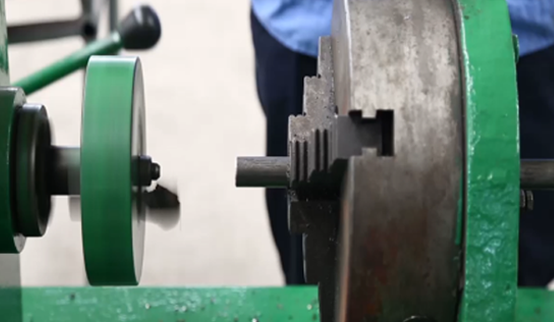 Afrikaans
Afrikaans  Albanian
Albanian  Amharic
Amharic  Arabic
Arabic  Armenian
Armenian  Azerbaijani
Azerbaijani  Basque
Basque  Belarusian
Belarusian  Bengali
Bengali  Bosnian
Bosnian  Bulgarian
Bulgarian  Catalan
Catalan  Cebuano
Cebuano  Corsican
Corsican  Croatian
Croatian  Czech
Czech  Danish
Danish  Dutch
Dutch  English
English  Esperanto
Esperanto  Estonian
Estonian  Finnish
Finnish  French
French  Frisian
Frisian  Galician
Galician  Georgian
Georgian  German
German  Greek
Greek  Gujarati
Gujarati  Haitian Creole
Haitian Creole  hausa
hausa  hawaiian
hawaiian  Hebrew
Hebrew  Hindi
Hindi  Miao
Miao  Hungarian
Hungarian  Icelandic
Icelandic  igbo
igbo  Indonesian
Indonesian  irish
irish  Italian
Italian  Japanese
Japanese  Javanese
Javanese  Kannada
Kannada  kazakh
kazakh  Khmer
Khmer  Rwandese
Rwandese  Korean
Korean  Kurdish
Kurdish  Kyrgyz
Kyrgyz  Lao
Lao  Latin
Latin  Latvian
Latvian  Lithuanian
Lithuanian  Luxembourgish
Luxembourgish  Macedonian
Macedonian  Malgashi
Malgashi  Malay
Malay  Malayalam
Malayalam  Maltese
Maltese  Maori
Maori  Marathi
Marathi  Mongolian
Mongolian  Myanmar
Myanmar  Nepali
Nepali  Norwegian
Norwegian  Norwegian
Norwegian  Occitan
Occitan  Pashto
Pashto  Persian
Persian  Polish
Polish  Portuguese
Portuguese  Punjabi
Punjabi  Romanian
Romanian  Russian
Russian  Samoan
Samoan  Scottish Gaelic
Scottish Gaelic  Serbian
Serbian  Sesotho
Sesotho  Shona
Shona  Sindhi
Sindhi  Sinhala
Sinhala  Slovak
Slovak  Slovenian
Slovenian  Somali
Somali  Spanish
Spanish  Sundanese
Sundanese  Swahili
Swahili  Swedish
Swedish  Tagalog
Tagalog  Tajik
Tajik  Tamil
Tamil  Tatar
Tatar  Telugu
Telugu  Thai
Thai  Turkish
Turkish  Turkmen
Turkmen  Ukrainian
Ukrainian  Urdu
Urdu  Uighur
Uighur  Uzbek
Uzbek  Vietnamese
Vietnamese  Welsh
Welsh  Bantu
Bantu  Yiddish
Yiddish  Yoruba
Yoruba  Zulu
Zulu Innovative Solutions for Maximizing Efficiency in Roller Seal Technology
Understanding Roller Seals Mechanisms and Applications
Roller seals are an essential component in various mechanical systems, particularly those involving fluid containment and pressure maintenance. Their design and functionality cater to the demands of different industries, from automotive to aerospace, enhancing performance and efficiency. In this article, we will delve into the mechanics of roller seals, their types, applications, and benefits.
What are Roller Seals?
A roller seal is a sealing device that incorporates rollers or cylindrical elements that move against a sealing surface. This movement reduces friction compared to traditional flat seals, and it allows for better performance in dynamic applications. Roller seals are often used in environments where the relative motion between sealing surfaces is present, such as in hydraulic cylinders, pumps, and rotary joints.
Types of Roller Seals
There are various types of roller seals available, each designed for specific applications. Some common types include
1. Rotary Roller Seals These seals are designed for rotary applications where the shaft rotates within the seal. They typically consist of a cylindrical roller that rolls against a mating surface, providing a reliable sealing solution that minimizes wear and friction.
2. Linear Roller Seals Used in linear motion applications, these seals allow for the smooth movement of pistons and rods within hydraulic or pneumatic systems. By using rollers, they reduce the contact area, leading to lower friction and heat generation.
3. Multi-Purpose Roller Seals These are adaptable seals that can be used in both rotary and linear applications. They offer versatility in design and can handle different types of fluids, pressures, and temperatures.
Applications of Roller Seals
The applications of roller seals are diverse, impacting various sectors
- Automotive Industry In automotive systems, roller seals are used in gearboxes, engine components, and hydraulic systems, where they maintain oil and coolant integrity, preventing leaks and ensuring optimal performance
.roller seal

- Aerospace The aerospace sector utilizes roller seals for fuel systems, hydraulic actuators, and landing gear systems, where reliability and light weight are critical.
- Manufacturing Roller seals play a vital role in industrial machinery, assisting in everything from material handling systems to automated robotic arms, where precision and durability are necessary.
- Marine Applications In marine environments, roller seals help prevent water ingress in various systems, ensuring that equipment operates efficiently and safely under adverse conditions.
Benefits of Roller Seals
The use of roller seals offers several benefits
1. Reduced Friction The rolling action of the rollers significantly decreases the friction between moving parts, leading to improved energy efficiency and less wear over time.
2. Improved Longevity Because roller seals minimize direct contact, they typically experience less degradation, resulting in longer service life compared to traditional seals.
3. Enhanced Performance By providing efficient sealing under dynamic conditions, roller seals contribute to the overall performance of machinery, ensuring reliability and reducing maintenance costs.
4. Versatility The adaptability of roller seals to different applications and environments makes them suitable for a wide range of industries, allowing for standardized components.
Conclusion
In conclusion, roller seals are a vital innovation that enhances mechanical performance by providing effective sealing solutions across various industries. Their design reduces friction, improves longevity, and ensures reliable operation, making them a preferred choice in applications requiring durability and efficiency. As technology continues to evolve, the integration of roller seals will likely expand, further solidifying their importance in modern engineering and manufacturing processes. Whether in automotive, aerospace, or industrial applications, roller seals will remain a critical component in driving innovation and efficiency.
-
Revolutionizing Conveyor Reliability with Advanced Rubber Lagging PulleysNewsJul.22,2025
-
Powering Precision and Durability with Expert Manufacturers of Conveyor ComponentsNewsJul.22,2025
-
Optimizing Conveyor Systems with Advanced Conveyor AccessoriesNewsJul.22,2025
-
Maximize Conveyor Efficiency with Quality Conveyor Idler PulleysNewsJul.22,2025
-
Future-Proof Your Conveyor System with High-Performance Polyurethane RollerNewsJul.22,2025
-
Driving Efficiency Forward with Quality Idlers and RollersNewsJul.22,2025





























